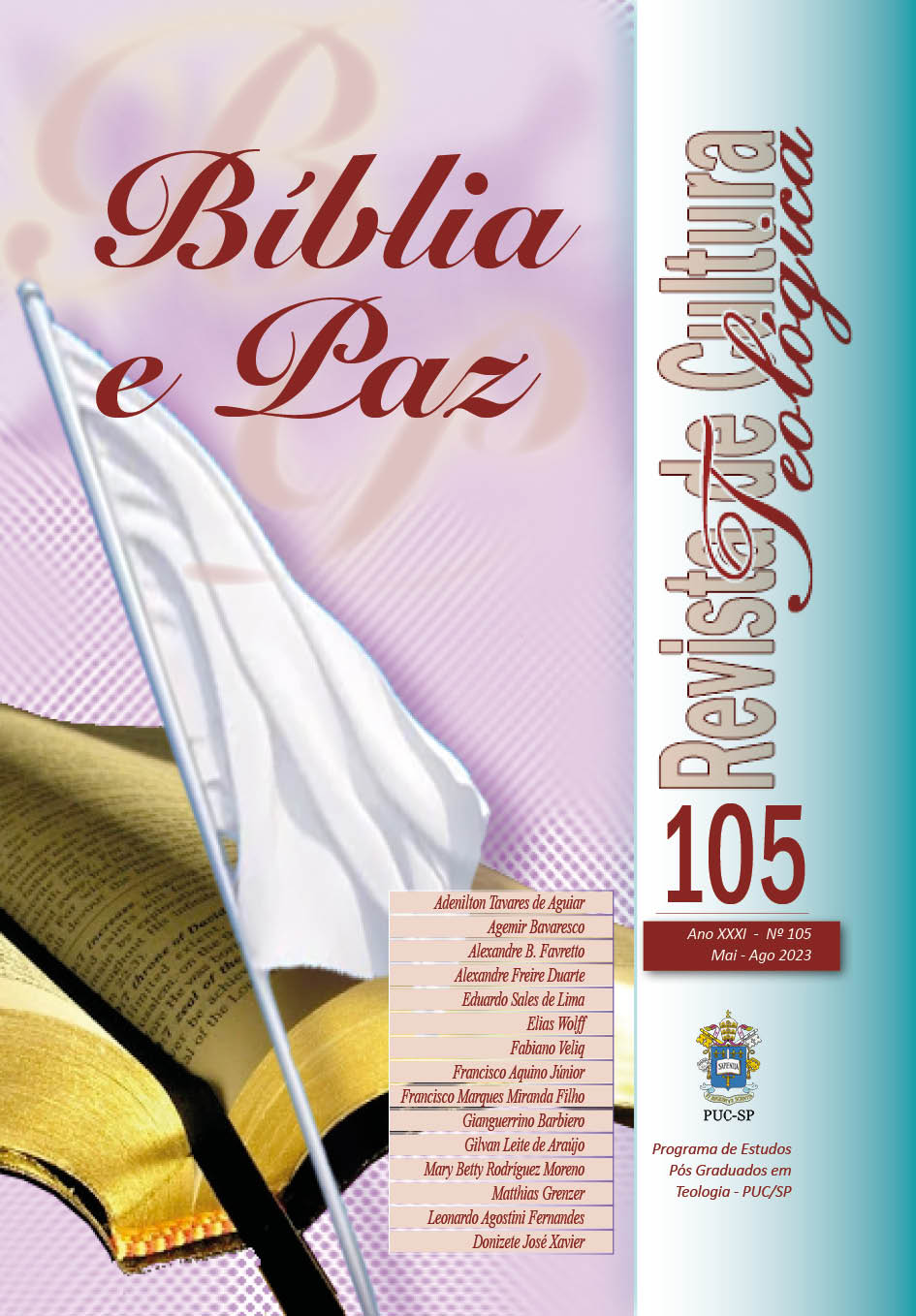Arte, Poder e Resistência
Império neoassírio, Levante Sul e etnogênese da identidade deuteronômica de Israel e Judá
DOI:
https://doi.org/10.23925/rct.i105.63069Palavras-chave:
Neoassírio, Levante Sul, Poder, Resistência, Identidade, DeuteronômioResumo
O período no qual se dá a formação inicial da identidade deuteronômica de Israel e de Judá se situa no contexto da construção da zona de poder do império neoassírio. A expansão imperial assíria incluiu a ocupação do norte do Levante, a dissolução do Reino de Israel, e a relação com o Reino de Judá na forma de reino cliente. Os assírios usaram diversas maneiras para expressar seu poder e estabeleceram um intercâmbio que aconteceu nos campos econômico, social e cultural. Entre as expressões de poder estão o uso de textos e da arte na construção das cidades centrais empreendidas por alguns dos principais reis neoassírios, mas também outros instrumentos de prestígio e favor aos designados pelo reino central para administrar os territórios conquistados que se tornaram províncias. É preciso avaliar o impacto da agenda imperial neoassíria na relação com os territórios conquistados e os satélites no Levante Sul, mas, principalmente, buscar entender as formas de resistência e como as mudanças ocorridas nesse período podem ser um dos elementos da formação de parte da identidade israelita presente nos textos do Livro do Deuteronômio.
Referências
BELL, Catherine. 1992. Ritual Theory, Ritual Practice. New York: Oxford University
Press, 1992.
BELL, Catherine. Ritual: Perspectives and Dimensions. New York: Oxford University Press, 1997.
CROUCH, Carly L. The Making of Israel. Leiden: Brill, 2014a.
CROUCH, Carly L. Israel and the Assyrians - Deuteronomy, the Succession Treaty of Esarhaddon, and the Nature of Subversion. Atlanta: SBL Press, 2014b.
DURING, Bleda S. The Imperialisation of Assyria An Archaeological Approach. Cambridge; University Press, 2020.
FINKELSTEIN, Israel. State Formation in Israel and Judah: A Contrast in Context,
a Contrast in Trajectory. NEA , 62, p. 35–52, 1999.
HOLLOWAY, Steven W. Aššur is King Aššur is King Religion in the Exercise of Power in the Neo-Assyrian Empire. Leiden: Brill, 2002.
HUNT, Alice M. Palace Ware Across the Neo-Assyrian Imperial Landscape Social Value and Semiotic Meaning. Leiden: Brill, 2015.
KLETTER, Raz. Between Archaeology and Theology: The Pillar Figurines from Judah and the Asherah Studies. In The Archaeology of the Iron Age in Israel and Jordan. Amihai Mazar (ed.). Sheffield: Sheffield Academic Press, 2001, p. 179-216
PANITZ-COHEN, Nava. The Pottery Assemblage.” In Yavneh 1: The Excavation of the “Temple Hill” Repository Pit and the Cult Stands. With Contributions by David Ben-Shlomo, Amir Gorzalczany, Henk K. Mienis, Dvory Namdar, Ronny Neumann, Nava Panitz-Cohen, and Steve Weiner, ed. Raz Kletter, Irit Ziffer, and Wolfgang Zwickel. Fribourg Switzerland: Academic, 2010, p.110–45.
POSTGATE, John. N. 2007. The invisible hierarchy: Assyrian military and civilian administration in the 8th and 7th centuries Bc. In: Postgate, J. N. (ed.) The Land of Assur and the Yoke of Assur: Studies on Assyria 1971–2005. Oxford: Oxbow Books, p. 331–360.
RUSSEL, John M. Writing on the Wall The Architectural Context of Late Assyrian Palace. Indiana: Eisenbrauns, 1999.
TYSON, Craig W.; HERRMAN, Virginia R. Imperial Peripheries in the Neo-Assyrian Period. Colorado, University Press, 2018.
Publicado
Como Citar
Edição
Seção
Licença
Copyright (c) 2023 Revista de Cultura Teológica

Este trabalho está licenciado sob uma licença Creative Commons Attribution-NonCommercial-NoDerivatives 4.0 International License.
Os autores concedem à revista todos os direitos autorais referentes aos trabalhos publicados. Os conceitos emitidos em artigos assinados são de absoluta e exclusiva responsabilidade de seus autores.

